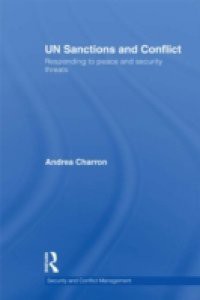This book examines the application of the UN Security Council's mandatory sanctions since 1946, and, in particular, the regimes adopted for specific types of conflict.Beginning in the Cold War period with South Africa and Southern Rhodesia and continuing today, following the post-9/11 experience with Al Qaeda and the Taliban, sanctions are a key tool in the UN's efforts to deal with conflict. This book argues that the type of threat greatly influences the types of sanctions measures applied by the Security Council, who is targeted, as well as the objectives tied to the sanctions. The question of sanctions application is approached by classifying all 29 mandatory Security Council sanctions regimes into four conflict types: interstate; intrastate; international norm-breaking states; and support to terrorism. All of the sanctions regimes within each conflict type are analysed for: the objectives sought by the Council through the application of sanctions measures the targets chosen what measures are applied and in what sequence compared to other Security Council tools (such as peacekeeping missions or peace negotiations). The book sheds new light on how the Security Council approaches international peace and security beyond the application of force. Offering an excellent summary of the ins-and-outs of UN sanctions, and useful summary tables of UN sanctions regimes by conflict type, this book will be of great interest to students of international organisations, peace and conflict studies, conflict resolution, security studies and international relations or politics in general.

